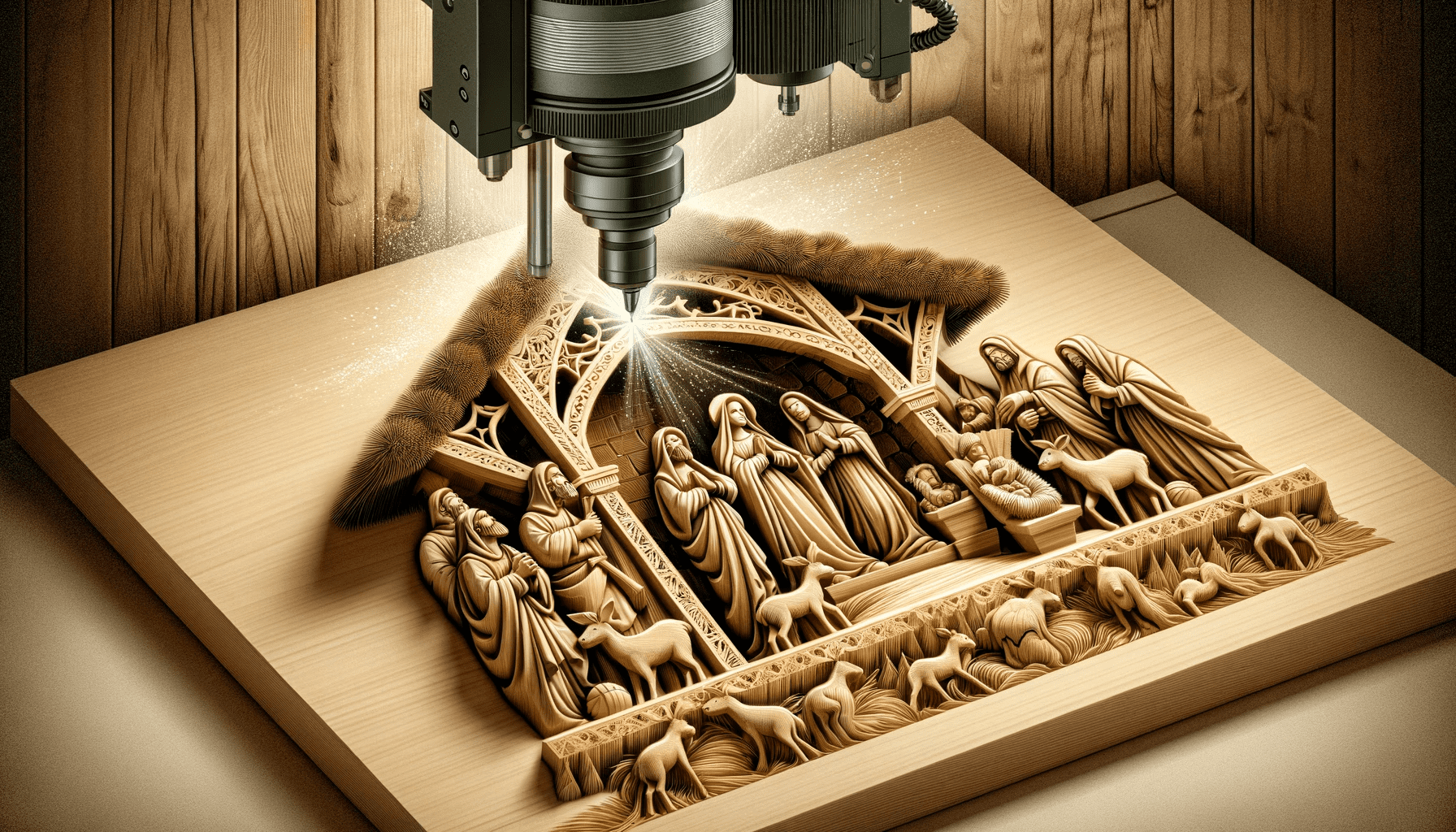Introduction to CNC Carving
Computer Numerical Control (CNC) carving is a widely used technology, especially in the field of manufacturing. This process involves the use of computer-controlled tools that move in three dimensions to carve out shapes from a solid block of material. The result is a precision-engineered piece that conforms exactly to the given specifications. This technology can be used with a variety of materials, such as metal, plastic, and wood.
CNC carving has revolutionized traditional carving methods, allowing for greater precision and efficiency in manufacturing. The technology allows for intricate designs to be executed with impeccable accuracy and repeatability, which is especially beneficial for creating detailed objects like nativity scenes. These scenes, depicting the birth of Jesus Christ, often include multiple figures and elements, each with its own detail and complexity.
The process of creating these nativity scenes with CNC carving is a blend of technology and art. It involves a detailed understanding of the CNC carving process, selection of the right materials, design of the nativity scene, precision carving, and finally, finishing and preservation of the carved piece. Every step is crucial in ensuring the final product is a beautiful and detailed representation of the nativity scene.
Understanding the CNC Carving Process
The CNC carving process begins with creating a digital model of the object to be carved. This is done using CAD (Computer Aided Design) software, where the model is broken down into a series of coordinates, or points in a three-dimensional space. These points, when connected, form the surface of the object.
Once the digital model is ready, it is then converted into G-code, a language that CNC machines understand. This code tells the machine where to move, how fast to move, and what path to follow. It ensures that the machine precisely carves out the design from the block of material.
The final step in the CNC carving process is the actual carving. The CNC machine follows the instructions in the G-code, meticulously moving its carving tool along the specified path. The carving tool chips away at the material until the final object emerges. This process can take several hours, depending on the complexity of the design and the size of the object.
Selecting Materials for CNC Carving
Choosing the right material is crucial when creating a CNC-carved nativity scene. The material determines not only the look and feel of the final product but also influences the carving process itself. Different materials require different carving tools and techniques.
Wood is the most common material for carving nativity scenes. It is easy to carve and gives a warm and traditional look to the final piece. Popular choices include hardwoods like oak or walnut, which are known for their strength and durability, and softwoods like pine or cedar, which are easier to carve but less durable.
Apart from wood, other materials like metal or plastic can also be used for CNC carving. They offer a different aesthetic and may be chosen based on personal preference or specific requirements. However, they require special tools and techniques for carving, which need to be taken into account during the design and carving process.
Designing Detailed Nativity Scenes for CNC Carving
The process of designing a nativity scene for CNC carving involves careful planning and a clear understanding of the capabilities of the CNC carving process. The first step is to sketch out the design, keeping in mind the size and scale of each element. The scene typically includes figures like Mary, Joseph, baby Jesus, the three wise men, shepherds, and animals.
Once the design is sketched out, it is then digitized using CAD software. This process involves creating a 3D model of the nativity scene, complete with all the intricate details. The software allows the designer to view the model from different angles, ensuring that the design is well-proportioned and detailed from every perspective.
The digitized design is then converted into G-code, which will guide the CNC machine during the carving process. This code needs to be meticulously checked to ensure that it accurately represents the design and that there are no errors that could affect the carving process.
CNC Carving Techniques for Enhanced Detail
CNC carving allows for a high level of detail, which is especially important when creating intricate objects like nativity scenes. Several techniques can be used to enhance this detail.
One such technique is relief carving, where the CNC machine carves out the background, leaving the figures and elements of the nativity scene raised. This gives a sense of depth and dimension to the scene.
Another technique is undercutting, where the CNC machine carves under the edges of the figures. This creates a shadow effect, making the figures seem more three-dimensional and lifelike.
Finally, the use of different carving tools can also enhance detail. For example, small diameter tools can be used for fine details, while larger tools can be used for carving out larger areas. The choice of tools needs to be carefully planned based on the design and the material being used.
Finishing and Preserving CNC-Carved Nativity Scenes
After the carving process, the nativity scene requires finishing to enhance its appearance and ensure its longevity. This involves sanding, staining or painting, and sealing the wood.
Sanding smoothens the surface of the nativity scene, removing any rough edges or marks left by the carving process. This should be done carefully to avoid damaging the detail of the scene.
The next step is staining or painting. This enhances the natural beauty of the wood and can also be used to add color to the scene. The choice of stain or paint depends on the type of wood used and the desired look of the final piece.
The nativity scene should be sealed to protect it from moisture and damage. A clear sealant is usually used, which maintains the natural look of the wood while providing a protective barrier. This step is essential in ensuring that the CNC-carved nativity scene lasts for many years.
